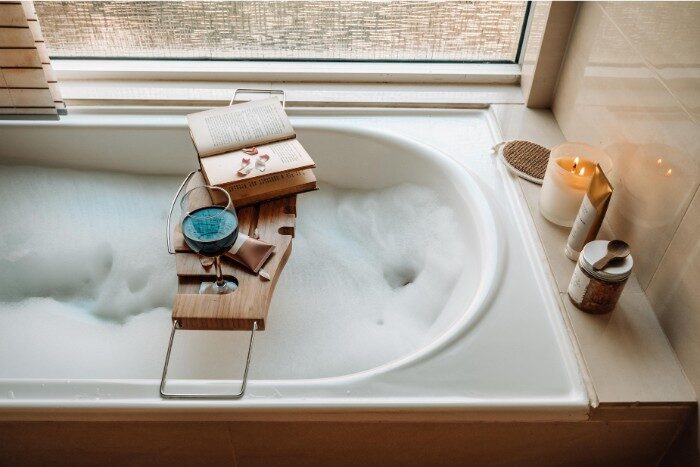For many people, nothing compares to unwinding in a warm, soothing bath after a long day. Baths can feel luxurious, but they also tend to use significantly more water than a quick shower. With rising utility costs and growing environmental concerns, many homeowners are looking for ways to reduce water consumption without giving up their favourite ritual. The good news is that you can still enjoy long soaks while keeping both your bills and environmental impact low. Here are the top tips for saving water – and money – when you enjoy taking relaxing baths.
Choose the Right Bath – Freestanding Baths for Efficiency
One of the first steps in saving water is to look at the kind of bath you’re using. Freestanding baths are increasingly popular for their stylish design and practical benefits. Unlike oversized built-in tubs, many modern freestanding baths are designed with efficiency in mind. They tend to come in sleek shapes that require less water to fill compared to deep, bulky tubs. By opting for a freestanding bath that balances comfort with a more compact design, you can still enjoy a deep soak without wasting unnecessary gallons of water.
Don’t Overfill the Tub
It’s tempting to fill your bath nearly to the brim, but most of that water goes unused once you slide in. A simple yet effective habit is to fill your tub only to the level needed for comfort. On average, filling a bathtub halfway instead of completely can save you 10–15 gallons per soak. Over time, that adds up to a substantial reduction in both your water bill and energy costs if you’re heating that water.
Use Warm, Not Hot, Water
Many people assume using hotter water is more indulgent, but excessively hot baths lose heat quickly, prompting you to add more hot water. By starting with comfortably warm water, you avoid the need for frequent top-ups. This not only conserves water but also saves on energy, making your baths more cost-effective in the long run.
Reuse Bathwater for Practical Purposes
If your bathwater isn’t heavily soapy or filled with oils, consider reusing it for non-drinking purposes. Some people collect cooled bathwater to water plants, wash outdoor surfaces, or even pre-rinse laundry. While this might not suit every household, reusing water is one of the most sustainable ways to extend the value of your relaxing soak.
Invest in Water-Efficient Fixtures
Your taps and drains play a big role in how much water you use and lose. Modern taps with aerators help control the flow without compromising pressure, while some freestanding baths now come with advanced filling systems that regulate the amount of water used. Additionally, ensure your bathtub plug is secure to prevent slow leaks, which can waste gallons over time.
Limit Frequency – Make Baths a Treat
Another way to conserve water is to rethink how often you indulge in a full bath. Instead of making baths a daily habit, consider saving them for two or three times a week and sticking to shorter showers on other days. This way, baths remain a special ritual without becoming an everyday drain on your water consumption.
Saving water doesn’t have to feel like a compromise. By transforming your bath into a mindful ritual, you can create a more luxurious experience that encourages longer relaxation with less water usage. When paired with a thoughtfully chosen freestanding bath, this approach allows you to enjoy spa-like comfort while staying eco-conscious.


